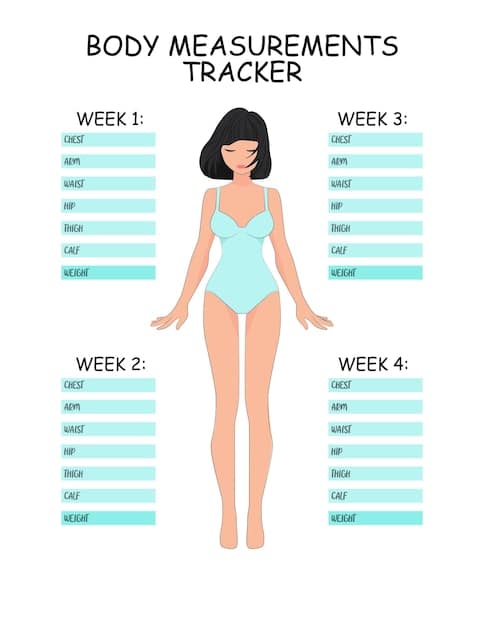Find Your Perfect Fit: A US Shopper’s Guide to Clothing Size Charts

Advertisements
Finding the perfect fit online requires understanding clothing size charts, which vary across brands and countries; this guide provides comprehensive insights for US shoppers to accurately navigate these charts and ensure a satisfying online shopping experience.
Navigating the world of online clothing shopping can be exciting, but it also brings the challenge of finding the right fit. This comprehensive guide, How to Find the Perfect Fit Online: A Comprehensive Guide to Clothing Size Charts for US Shoppers, is designed to empower you with the knowledge and tools needed to confidently shop for clothes online and avoid the dreaded returns.
Advertisements
Understanding US Clothing Sizes and Standard Charts
The first step in mastering online clothing shopping is understanding the nuances of US clothing sizes. Unlike a standardized system, sizes can vary significantly between brands and retailers. This section delves into the world of US clothing sizes, unraveling standard charts and offering clarity on how they’re typically structured.
Standard size charts in the US often break down measurements by inches for key areas like bust, waist, hips, and inseam. These measurements form the foundation for sizing, but remember, they’re guidelines, not gospel. Brands often cater to specific body types, leading to variations in how these measurements translate to a size.
Advertisements
Decoding Common Size Chart Measurements
Size charts often include a range of measurements. Understanding what these measurements represent and how they relate to your body is crucial for accurate sizing.
- Bust/Chest: Measure around the fullest part of your bust or chest, keeping the tape horizontal.
- Waist: Measure around your natural waistline, which is usually the narrowest part of your torso.
- Hips: Measure around the fullest part of your hips, keeping the tape horizontal.
- Inseam: Measure from your crotch to the bottom of your ankle to determine the proper pant length.
Always measure yourself accurately and compare your measurements to the brand’s specific size chart. Don’t assume that because you’re a size 8 in one brand, you’ll be the same in another.
Grasping standard charts and recognizing the importance of accurate measurements lays a strong foundation for successful online shopping.

Why Size Charts Vary Between Brands and Retailers
One of the most frustrating aspects of online clothing shopping is the inconsistency in sizing between different brands and retailers. This variation isn’t arbitrary; it’s often a strategic decision rooted in target demographics and manufacturing practices. Understanding these factors can help you anticipate sizing differences and make more informed purchasing decisions.
Brands often design their clothing to fit a specific “ideal” body shape, which can differ significantly. For example, a brand targeting a younger demographic might create clothing with a slimmer fit, while a brand catering to a more mature audience might offer more generous sizing.
The “Vanity Sizing” Phenomenon
Vanity sizing, the practice of labeling clothes as smaller sizes than their actual measurements, is a common marketing tactic. Understanding this can help you avoid relying solely on the size number.
Ultimately, understanding the factors behind size variations empowers you to look beyond the size number and focus on actual measurements when making online purchases.
How to Accurately Measure Yourself for Online Shopping
Accurate self-measurement is the cornerstone of successful online clothing shopping. This section provides a step-by-step guide on how to measure yourself effectively, ensuring you have the most accurate data to compare against size charts.
Before you begin, gather the necessary tools: a flexible measuring tape (preferably cloth), a mirror, and a notepad and pen to record your measurements. Wear lightweight clothing or undergarments for the most accurate results.
Step-by-Step Measurement Guide
- Bust/Chest: Stand straight with your arms relaxed at your sides. Have someone help you, or carefully measure yourself in front of a mirror, ensuring the tape is horizontal and snug but not too tight.
- Waist: Find your natural waistline by bending to the side. It’s the crease that forms. Measure around this point, keeping the tape horizontal.
- Hips: Stand with your feet together and measure around the fullest part of your hips, keeping the tape horizontal.
- Inseam: Stand with your shoes on and have someone measure from your crotch down to the top of your shoe.
Taking the time to measure accurately can dramatically increase your chances of finding the perfect fit online.

Tips for Using Online Clothing Size Charts Effectively
Once you have your measurements, it’s time to put them to work using online clothing size charts. This section provides practical tips to navigate size charts effectively, ensuring you make the best possible sizing decisions.
Always prioritize the brand’s specific size chart over generic charts. Remember that sizes vary, so the brand’s chart is the most relevant source of information. Look for detailed charts that include not only sizes but also the corresponding measurements for each size.
Beyond the Numbers: Considering Fit Preferences
Size charts are objective, but personal fit preferences are subjective. This exploration allows you to factor in your individual style and comfort choices when selecting a size.
By carefully analyzing size charts, considering fabric types, and factoring in your personal preferences, you can significantly improve your odds of finding the perfect fit online.
Understanding International Size Conversions for US Shoppers
If you’re shopping from international retailers, understanding size conversions is crucial. This section provides guidance on converting US sizes to international sizes and vice versa.
International size conversions can be tricky due to differing systems. For example, European sizes are typically numbered differently than US sizes. Women’s US size 8 might be a European size 40, and a UK size 12. Menswear also has different norms. Always consult a reliable conversion chart.
Tools and Resources for Size Conversion
Leverage online resources and apps to make size conversions easier and more accurate, guaranteeing well-informed purchasing decisions.
- Online Conversion Charts: Many websites offer size conversion charts for various regions.
- Mobile Apps: Several apps are designed specifically for size conversion.
- Brand-Specific Guides: Some international retailers provide their own conversion charts tailored to their sizing.
When in doubt, it’s always best to err on the side of caution and potentially size up, especially when dealing with unfamiliar sizing systems.
With the right tools and knowledge, you can confidently navigate international sizing systems and expand your online shopping horizons.
What to Do When You’re Between Sizes
Sometimes your measurements might fall between two sizes on a size chart. This section offers guidance on how to make the best choice when you’re “between sizes,” ensuring a comfortable and flattering fit.
If your measurements fall between two sizes, consider the garment’s style and fabric. For fitted items like shirts and dresses, it’s generally better to size up to ensure a comfortable fit across the bust and shoulders. For looser items like sweaters or skirts, you might be able to size down without compromising comfort.
The Importance of Reading Customer Reviews
Harness the experiences of other shoppers to refine your sizing decisions, gaining insights into real-world fit and construction.
Ultimately, the decision of whether to size up or down when you’re between sizes depends on your individual preferences, the style of the garment, and the fabric type. Don’t be afraid to experiment and find what works best for you.
Choosing the right size when you’re in-between can significantly impact your shopping experience, and ensure all your garments fit as they should.
| Key Point Summary | Brief Description |
|---|---|
| 📏 Accurate Measurement | Essential for comparing against size charts. |
| 👚 Brand Variation | Sizes differ; consult brand-specific charts. |
| 🌍 International Sizes | Use conversion charts for foreign brands. |
| 🤔 Between Sizes | Consider fit preference and garment style. |
Frequently Asked Questions (FAQ)
▼
It’s recommended to measure yourself at least every six months, or whenever you experience a significant change in weight or body shape. This ensures you have the most accurate measurements for comparing against size charts.
▼
If a brand doesn’t provide a size chart, it’s best to contact their customer service and request one. Alternatively, you can look for customer reviews that might offer insights into the brand’s sizing compared to standard US sizes.
▼
No, size charts can vary for different types of clothing, such as tops, bottoms, dresses, and outerwear. Always check the specific size chart for the type of garment you’re interested in purchasing.
▼
Customer reviews can be helpful, but it’s essential to consider that everyone’s body shape and fit preferences are different. Look for reviews that mention specific measurements to see if they align with your own.
▼
Check the retailer’s return policy. Most online retailers offer returns or exchanges for items that don’t fit. Before making a purchase, familiarize yourself with their policy to understand the process.
Conclusion
Mastering the art of finding the perfect fit online requires a combination of accurate self-measurement, understanding size chart variations, and leveraging available resources. By following the tips and guidelines outlined in this comprehensive guide, US shoppers can confidently navigate the world of online clothing shopping and enjoy a more satisfying and successful experience.